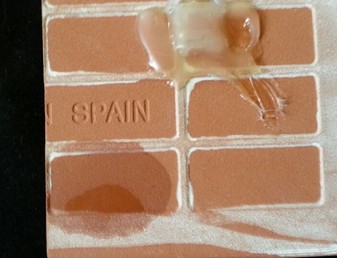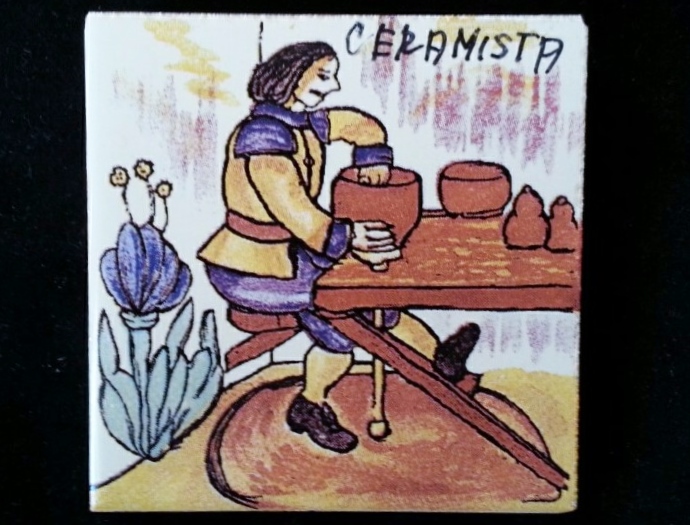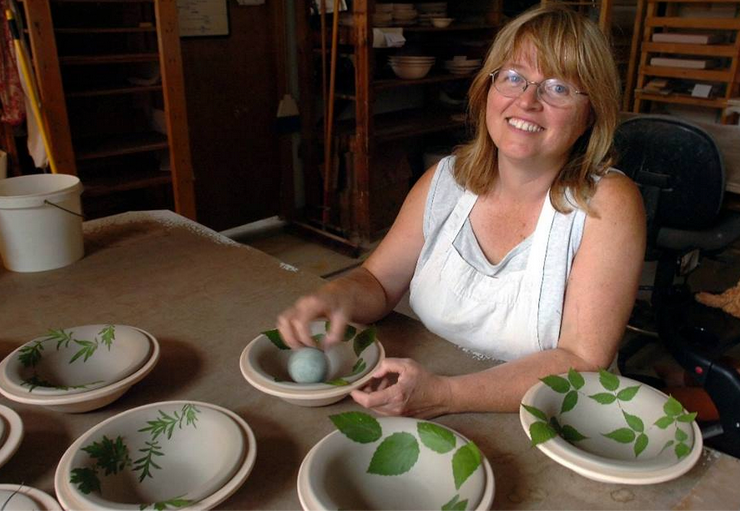 Customers sometimes ask how to tell if a piece of pottery will be durable. It comes down to what kind of clay has been used to make the piece, and whether the potter fired it to the right temperature using a glaze that fits the clay at that temperature. It can be tricky for potters if they assume the clay will be mature just because the piece looks good or they fired it within the recommended range from the clay supplier. Sometimes a pot can look good, but if the clay body isn't fired to a high enough temperature it will not be durable. Sometimes clay manufacturers offer a wider range of temperature than is realistic and unless the potter knows this information, and tests the finished work, they may unknowingly be selling pots that are actually under fired. I learned a long time ago that purchasing a piece that chips easily from normal daily use makes me very sad--even if the design is appealing. For that reason, when I am thinking about buying a piece, one of the first things I check has to do with how water tight the clay body is. If clay is not fired to a high enough temperature--to the point of "vitrification" (a technical term that means the clay begins to transform into glass)-- it will still be porous (meaning it has tiny holes) and will absorb water. I realized how very much I care that the pottery in my personal collection is durable after looking around the studio and my house to try to find a piece to illustrate this. It turns out I don't have any pots that look fine but are under fired. I just don't buy them. I did manage to find a tile a dear friend brought me that is clearly under fired. What you see in the photo here is what I call the "wet test." The little oval spot on the lower left is what happened after I wet my thumb and pressed it against the tile. Do note, the yucky looking blob at the top is some glue used to hold a little plastic hanger in place. Just try to avert your eyes from that as it goes into a topic for another time about craftsmanship and pride in work but has little to do with the topic of this post. You can test the bottom of any pot (or in this case, a tile) by putting a little water on the unglazed bottom. Miss Manners suggest using some bottled water, not your finger and saliva--that would be YUCKY (although if you just don't have a water bottle with you when considering a piece for purchase, at least try not to let the potter, gallery owner, or other members of the general public see you performing the wet test with your own saliva). By applying a small finger stroke of water to the non-glazed part of a pot, and observing if (or how quickly) it absorbs, you can learn a bit about how durable the piece is. If moisture is absorbed so quickly your wet finger practically sticks to the piece (as happens with the tile shown above--it soaked up the water so fast I could barely get a photo with any water still showing) that's a real problem. Unless your only plan for the piece is to enshrine it on a stand it would be a good idea to rethink the purchase. Finished pieces that absorb water are not good for anything except decoration. Glaze will likely pop off the piece eventually. It is also likely the pot will chip from even a finger scratch or a sidelong glance. You can completely forget about putting a porous piece of work in the dishwasher. Water will be absorbed under the glaze and it will pop right off. If after the wet test, the moisture absorbs more slowly, you have a piece you could use gently but not put in the dishwasher or microwave. What you really want for a durable functional piece is a finished clay body that is not absorbent at all. Kaleidoscope pots repel liquid because they have been fired to the hottest temperature our clay body can endure without melting. That's why they hold up so well to dishwasher use and are pretty difficult to chip. In spite of the low durability of this porous under fired tile, I completely love it. It hangs on the wall in my production room and makes me happy on a regular basis. It doesn't really need to be super durable because its function is only to hang on the wall. If I were going to eat or drink from it, or tile my floor with a hundred like it, that would be another story with a sad ending.
0 Comments
Leave a Reply. |
Categories
All
AuthorEvelyn Snyder, Potter |


 RSS Feed
RSS Feed